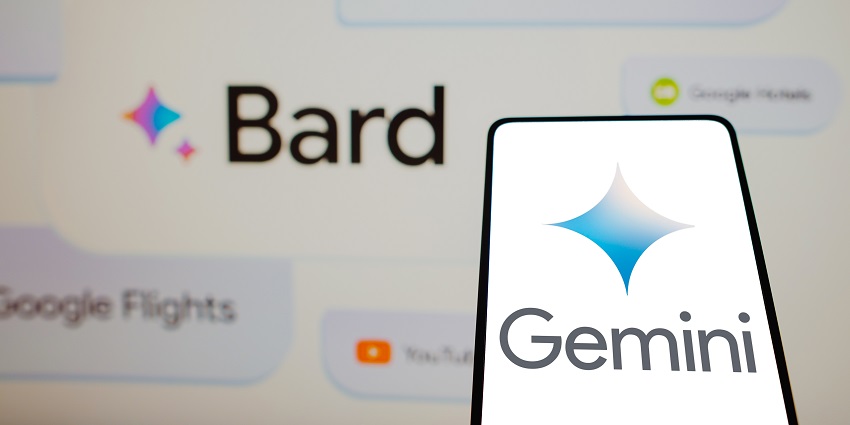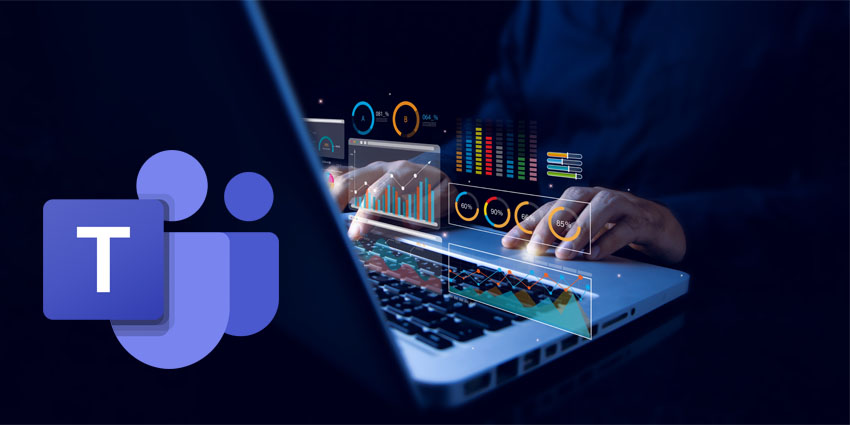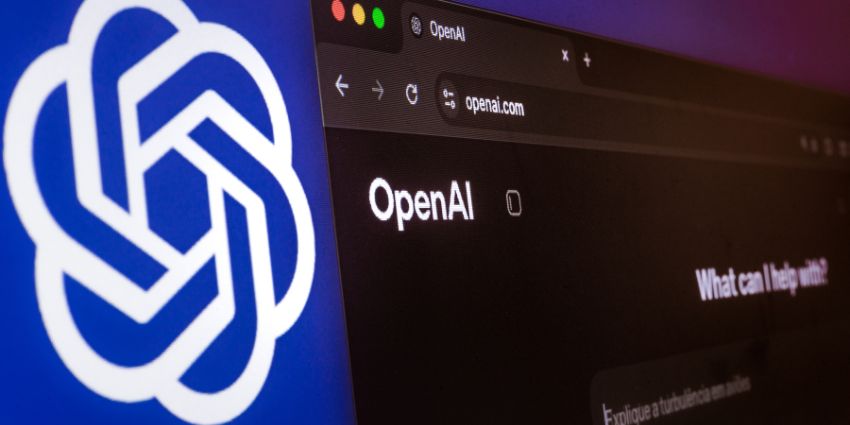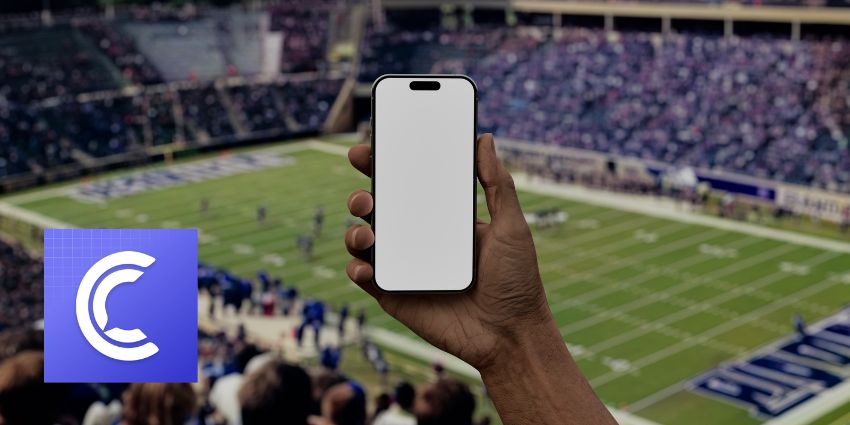Google Gemini vs. Bard: Is there a difference beyond the change in name? Not long after it officially launched its “Bard” generative AI application, Google revealed it was renaming its popular chatbot, based on the AI model that now powers it, Gemini.
The rebrand doesn’t just change the name of the “Bard” application; it also represents a significant step forward in Google’s generative AI journey. Although you might not immediately notice the difference between using Bard and Gemini (depending on the version you choose), the underlying ecosystem is very different.
You can still chat with Gemini on the web just like you would interact with Bard, and the tool can still generate content and suggestions, similar to Microsoft’s central Copilot solution or ChatGPT. However, Bard is powered by a far more advanced large language model (LLM) ecosystem.
To clarify the chaos, let’s look at the key differences between Google Gemini and the Bard predecessor.
Google Gemini vs Bard: What was Google Bard?
Google Bard was the first Google generative AI app, designed to compete with solutions like ChatGPT and Microsoft’s “Bing Chat” (Now Copilot) service. It was introduced in March 2023, just when the hype around generative AI tools was taking off.
Although Bard did have some initial flaws, it performed relatively well as Google’s initial generative AI bot. It used a lightweight version of the LaMDA model, built on Google’s neural network architecture (Transformer). Interestingly, GPT-3, one of the earlier versions of the models used by OpenAI for ChatGPT, also used the Transformer architecture.
Bard was essentially a chatbot that could help you browse the internet, create content, and summarise long documents or topics. It offered basic writing assistance, content generation options, and fundamental help with SEO (although it couldn’t really help you analyse keywords).
Google Gemini vs Bard: What is Google Gemini?
Google Gemini is both the name of Google’s proprietary collection of large language models (LLMs), and the new name for Google Bard, the company’s previous generative AI chatbot. On a broad scale, the Gemini models (which come in three versions), are multimodal LLMs designed to power a range of Google experiences, including those in Google Workspace, and the Google Gemini web app.
The three Gemini models include:
- Gemini Nano: A “lite” version of the LLM intended for mobile generative AI experiences.
- Gemini Pro: The main version of Gemini, currently powering the free version of the Gemini generative AI chatbot (previously Bard).
- Gemini Ultra: The most advanced version of the Gemini LLM. This version is also available to use with the Gemini chatbot experience via a “Gemini Advanced” subscription plan, which costs $19.99 per month per user.
Initially, there was a waiting list for people who wanted to use Google Gemini instead of Bard. Google opened access to the chatbot experience in 2024 and also introduced new mobile versions of the tool powered by the same underlying LLMs.
Compared to the previous models used to power tools like Bard, Gemini has some unique capabilities. The Gemini LLMs feature advanced reasoning capabilities, according to Google’s CEO. This basically means the bot can “think more carefully” about its answers, reducing the risk of AI hallucinations. It can also understand text, audio, images, video, and computer code.
Perhaps the best way to think of Gemini (at least the chatbot experience) is as the “evolution” of Bard, powered by new large language models and advanced features.
Google Gemini vs Bard: The Core Differences
If you visit the Gemini webpage today, you’ll notice the experience of talking to the chatbot feels similar to using Google Bard. I think Gemini’s interface is a little cleaner, however, and I appreciate all of the “suggestions” you get at the top of the page to help you start using the feature.
When you dive a little deeper, however, the differences between Gemini and Bard become much more notable. Gemini is much more accurate, nuanced, and intuitive than Bard. It was trained on a much larger, more diverse dataset, and it’s better at understanding queries than its predecessor.
It also features one of the longest context windows of any generative AI chatbot, supporting up to 1 million tokens (which is a huge upgrade from what you get with ChatGPT).
If you upgrade to Gemini Advanced, the experience is even better. In fact, Google created a graph comparing the functionality of Gemini Ultra (the LLM that powers Gemini Advanced) to GPT-4. According to the graph, Gemini outperforms GPT-4 in virtually every area.
Google Gemini can also handle more complex tasks that Bard would have struggled with (like intricate creative writing projects). It can access and process information in real time through Google Search and even generate images.
Let’s take a closer look at the key differences between the two tools.
Google Gemini vs Bard: Functionality and Use Cases
Google Gemini isn’t just the name for Google’s updated Bard experience, it’s a comprehensive selection of large language models, powering a range of Google solutions. The chatbot experience offers users comprehensive tools for everything from producing high-quality content to search engine optimisation, image generation, and coding.
With Gemini Advanced, users can access even more advanced functionality. For instance, Gemini Advanced can act like a personal tutor or coach, giving users step-by-step guidance. It can also help build advanced coding scenarios and analyse market trends.
Bard, on the other hand, was a simpler chatbot service based on the LaMDA model. It was similar to ChatGPT and allowed users to perform a range of tasks, from drafting emails to getting answers to various topics. It did have some basic multimodal capabilities, but it wasn’t as advanced as Gemini.
Google also previously opened access to Bard, allowing companies to use the tool to create applications that would help them optimise customer service and other workplace processes.
The Underlying Architecture
Bard relied primarily on Recurrent Neural Networks (RNNs), LaMDA, and Google’s Transformer network. The RNNs meant Bard was more effective at processing small text segments sequentially, but it often struggled to grasp complex relationships between words.
Google Gemini, powered by the Gemini LLMs, focuses more on transformer technology. Transformers can process large sequences of text simultaneously, allowing for a greater understanding of word relationships, sentence structure, and context.
It’s more effective at understanding tone in conversations, and emotional intent. Plus, it possesses greater multimodal capabilities than Bard (as mentioned above). This means it can more effectively understand images, audio, and videos and examine connections between modalities.
Google Gemini vs Bard: Data and Training
Although Google has shared limited information about Gemini’s training, it has confirmed that the bot is the most advanced ever created by Google’s AI team. Gemini is trained on a larger, more diverse dataset than Bard, to boost its multimodal capabilities.
Gemini Ultra, which powers Gemini Advanced, also exceeds state-of-the-art results on all but 2 of the top 32 academic benchmarks used for LLM research and development. It was even the first model to outperform human experts on tasks related to massive multitasking language understanding.
Bard was also trained on a significant dataset, but most of the data fed into the system was text-based. That made Bard more effective for textual interactions. Unlike Gemini, Bard also wasn’t able to leverage specialised datasets for specific tasks. It relied on more general sources of information, and Google Search, which meant it was prone to AI hallucinations.
Natural Language Processing and Responses
One thing that made Bard pretty impressive for early generative AI bot adopters, was its ability to access the internet. Unlike other free tools, like ChatGPT, Bard could search the internet to source relevant information from the web. Gemini can do this too, but its responses are generally better, more informative, and more accurate than Bard’s.
Since Gemini accesses a much larger, more diverse dataset than Bard and benefits from more advanced processing algorithms, it’s far more effective at producing accurate responses. While Bard could generate informative answers to questions, its accuracy wasn’t always great.
In fact, in one report, researchers found Bard only had an accuracy score of around 63 percent. A major reason for this issue was the limited natural language processing capabilities of Bard. While the tool could generate grammatically correct sentences, it didn’t have a full understanding of human language. Gemini leverages a more advanced neural network to address this issue.
Instead of recurrent neural networks, Gemini leverages advanced transformers to process various forms of information and understand things like emotional nuance, context, and intent. Additionally, in the Gemini app, users can select a portion of text in response and give the app instructions on how to alter it to fine-tune their answers.
Availability and Accessibility
Since Gemini is replacing Bard, the original “Bard” experience will only be available to users in regions where the transition has yet to take place. Currently, Gemini is available in 230 countries and territories, and as of April 2024, it includes access to extensions in over 40 languages.
The chatbot experience is also available via the web, and through mobile apps for Android and iOS. The mobile experience allows users to chat, talk, or share images with Gemini on the move. Plus, the solution can help with drafting text and summarising conversations.
Unlike Bard, which was completely free to use, Gemini is offered in a range of packages. The standard Gemini chatbot experience, powered by Gemini Pro, is free. Alternatively, Gemini Advanced, which uses Gemini Ultra, is available for $19.99 per month.
Google also introduced Gemini Business and Gemini Enterprise plans for companies using Google Workspace. These plans combine the Gemini Ultra version of the LLM-powered bot with the features of Google Workspace, such as Google Docs and Sheets. These business-focused plans include enterprise-grade data protection and are available in more than 150 countries and territories.
Google Gemini vs Bard: Which is Better?
Clearly, Google Gemini is far more than just a renamed version of Google Bard. It surpasses the previous chatbot solution in everything from accuracy to nuance and real-world integration. The advanced models powering Gemini mean it’s more powerful, versatile, and capable of supporting users with a wide range of tasks.
Ultimately, Bard was the foundation for Gemini’s development. It gave Google a way to initially compete in the generative AI landscape when demand for LLM-powered chatbots was increasing. Gemini represents the next step in Google’s AI-powered strategy.







